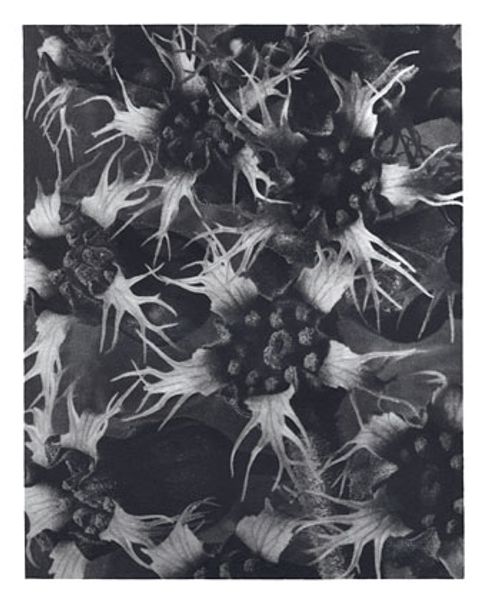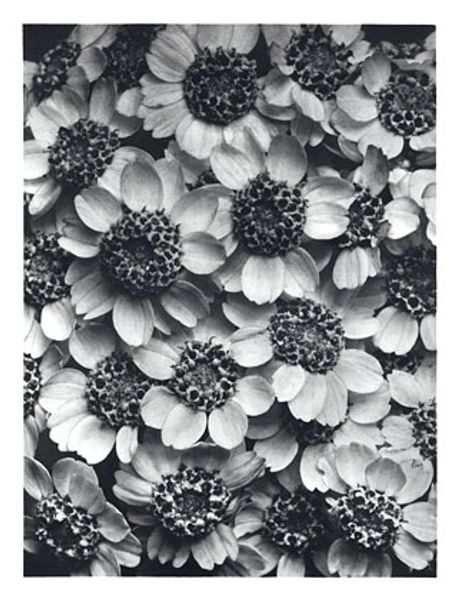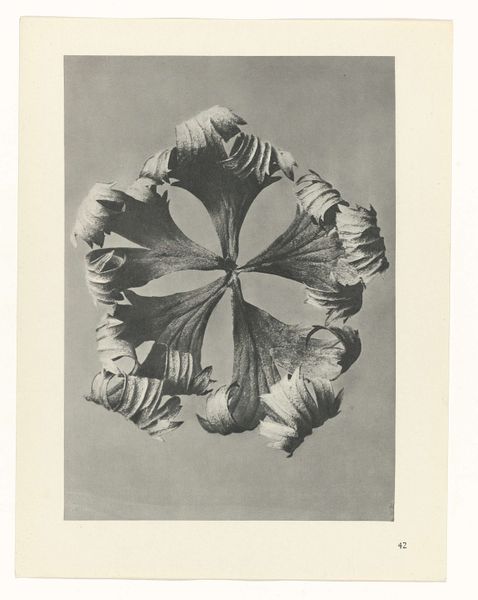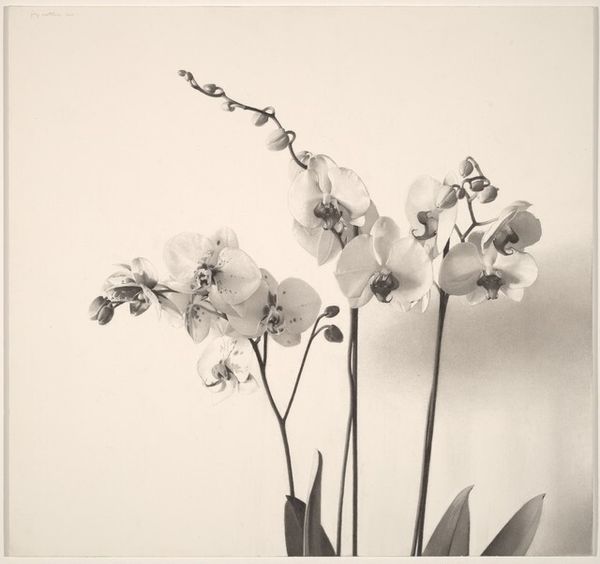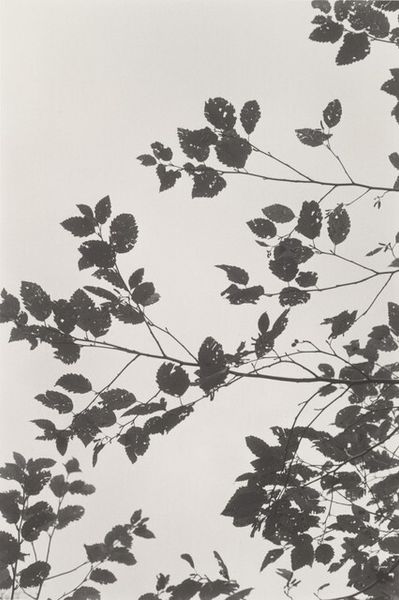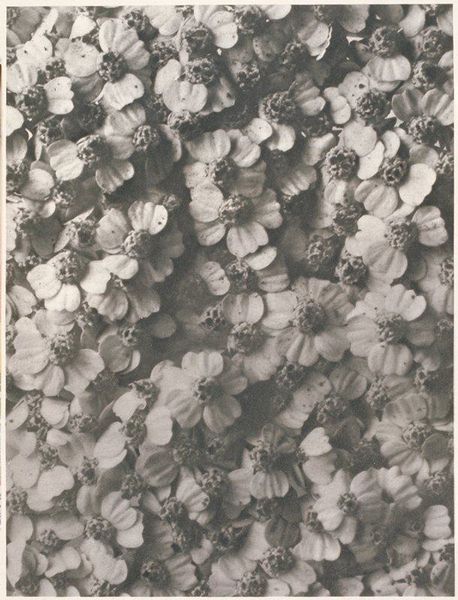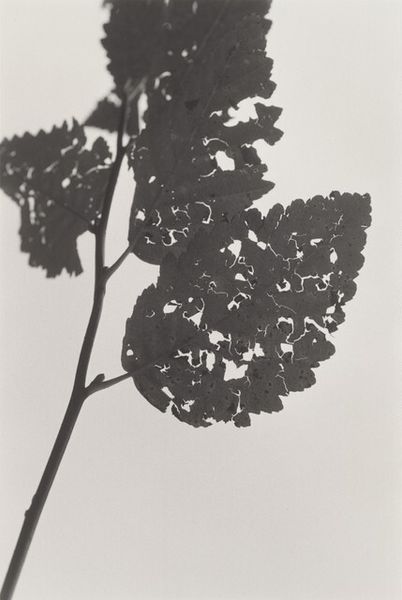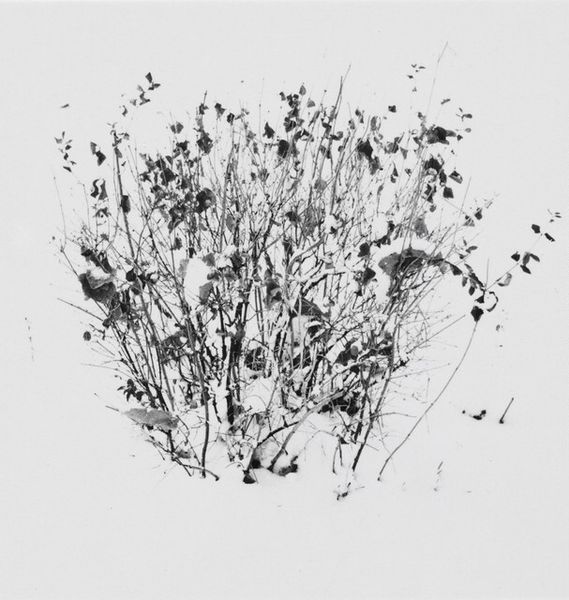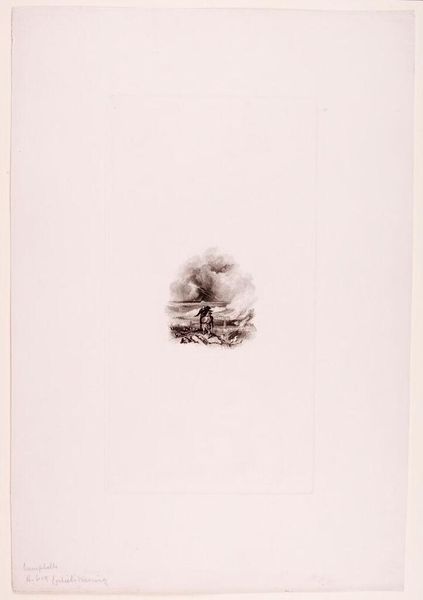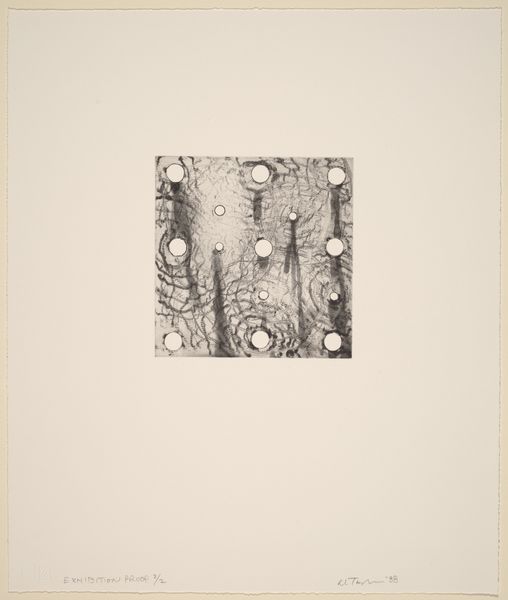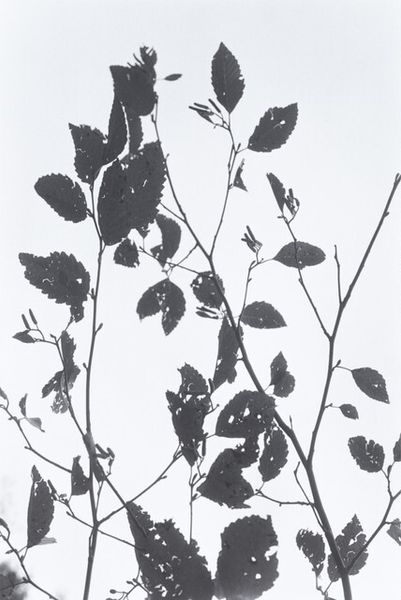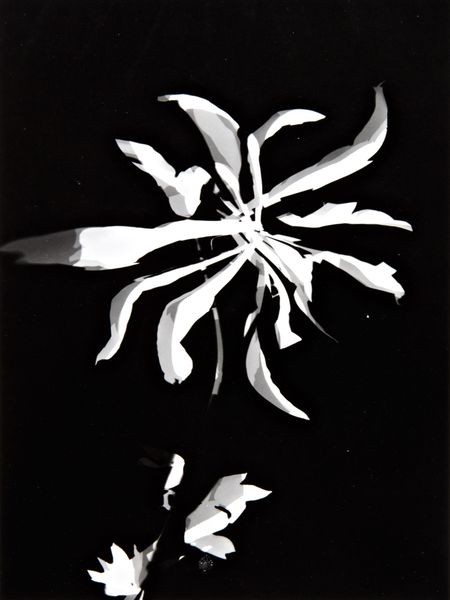
Copyright: Public domain
Curator: It almost looks like a crown of stars, doesn't it? A dark, almost somber galaxy of floral forms. Editor: That's a strong read. This image is plate 117, and one of many floral studies in Karl Blossfeldt’s “Art Forms in Nature,” published in 1928. He's capturing horsetail, I believe, with his own adapted camera, meant to explore the underlying structure of nature. What emotional impact do you suppose these stark, almost scientific, images carried in that era? Curator: Blossfeldt has arranged them with incredible formal precision. The Art Nouveau era favored floral ornament, yes, but his rendering possesses this stripped-down aesthetic of Neue Sachlichkeit, New Objectivity in Germany, emerging post World War One. It lacks almost all sentimentality in its botanical detail. Instead, what is revealed, feels archetypal, almost primal. Editor: Precisely. He presents this seemingly objective viewpoint, but how objective can a photograph really be, especially when seen within a society looking to rebuild? Do you think there's something to be said about reclaiming natural forms with new clarity in a time of rebuilding? Almost an invocation for renewal, through seeing essential form? Curator: A cultural yearning certainly seems evident, or perhaps the recognition of inherent geometric perfection—order latent in chaos. These macro photographs make visible underlying natural codes and patterns. We tend to imbue flowers with themes of growth, decay, ephemerality and so on, yet in that respect this composition suppresses a single, obvious symbolic narrative. They resist that sentimental reading so characteristic of that time. Editor: Yet they certainly have not resisted the social narratives that surround them. Looking at his work, I see a confluence: the individual aesthetic project aligning with burgeoning artistic movements like the New Objectivity—all influencing and informed by larger cultural shifts. What initially appeared almost cold, even purely objective, is incredibly layered. Curator: His subjects become monuments; they appear timeless, enduring even as individual blooms will fade. I see both observation and transformation. Blossfeldt is letting these plants speak, each on their own stark background. He unveils the power of symbolic resonance. Editor: Exactly! The social resonance that art obtains over time... thank you. I see more each time I look. Curator: Agreed. An important reframing indeed.
Comments
No comments
Be the first to comment and join the conversation on the ultimate creative platform.
